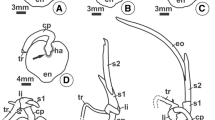Abstract.
Mature seeds of Salix alba L. and Salix matsudana Koidz. are exendospermous and consist of an embryo and a seed coat. Ultrastructural studies show the presence of protein bodies, lipid bodies, chloroplasts, and a nucleus in the cells of most of the embryo tissues. Protein bodies always contain two or more globoid crystals. Energy-dispersive X-ray analysis of globoid crystals revealed the presence of P, K, Mg and Ca as the main constituents in all tissues. The chloroplasts present well-developed grana and, frequently, starch grains in the stroma. In cells of apical meristems, plastid endomembranes are non-organised in grana and deposits of phytoferritin are present in the stroma. Some cells of the subdermal layers of the cotyledons and hypocotyl-radicle axis present a large central vacuole and a narrow peripheral band of cytoplasm within which the protein bodies are scarce. Seeds of the two species studied here have recently been characterised as orthodox with short viability. The present study was carried out in an attempt to advance in the characterisation of these seeds as part of a comprehensive study of Salicaceae seeds.
Similar content being viewed by others
Author information
Authors and Affiliations
Additional information
Electronic Publication
Rights and permissions
About this article
Cite this article
Maroder, H., Prego, I. & Maldonado, S. Histochemical and ultrastructural studies on Salix alba and S. matsudana seeds. Trees 17, 193–199 (2003). https://doi.org/10.1007/s00468-002-0221-3
Received:
Accepted:
Issue Date:
DOI: https://doi.org/10.1007/s00468-002-0221-3




